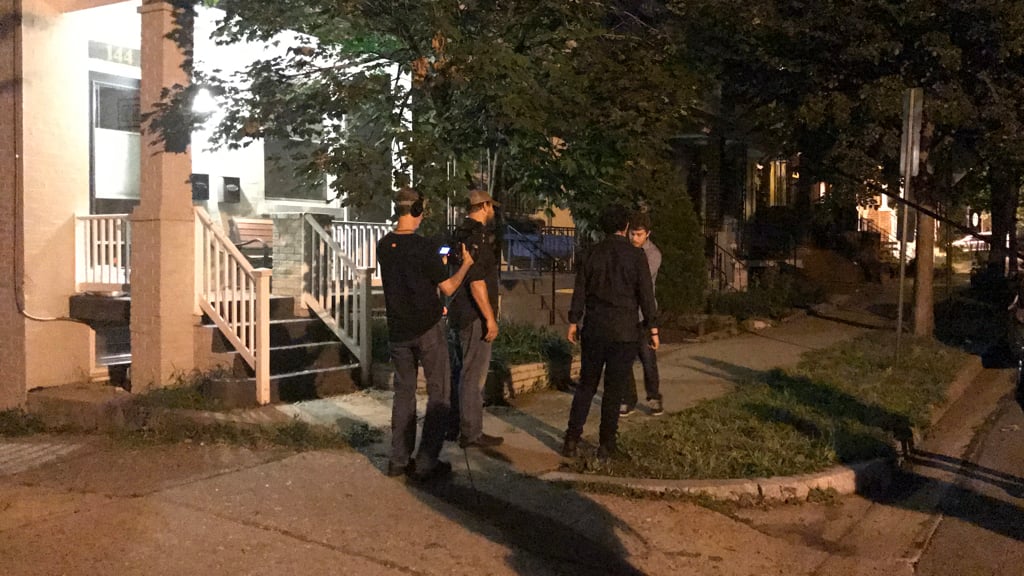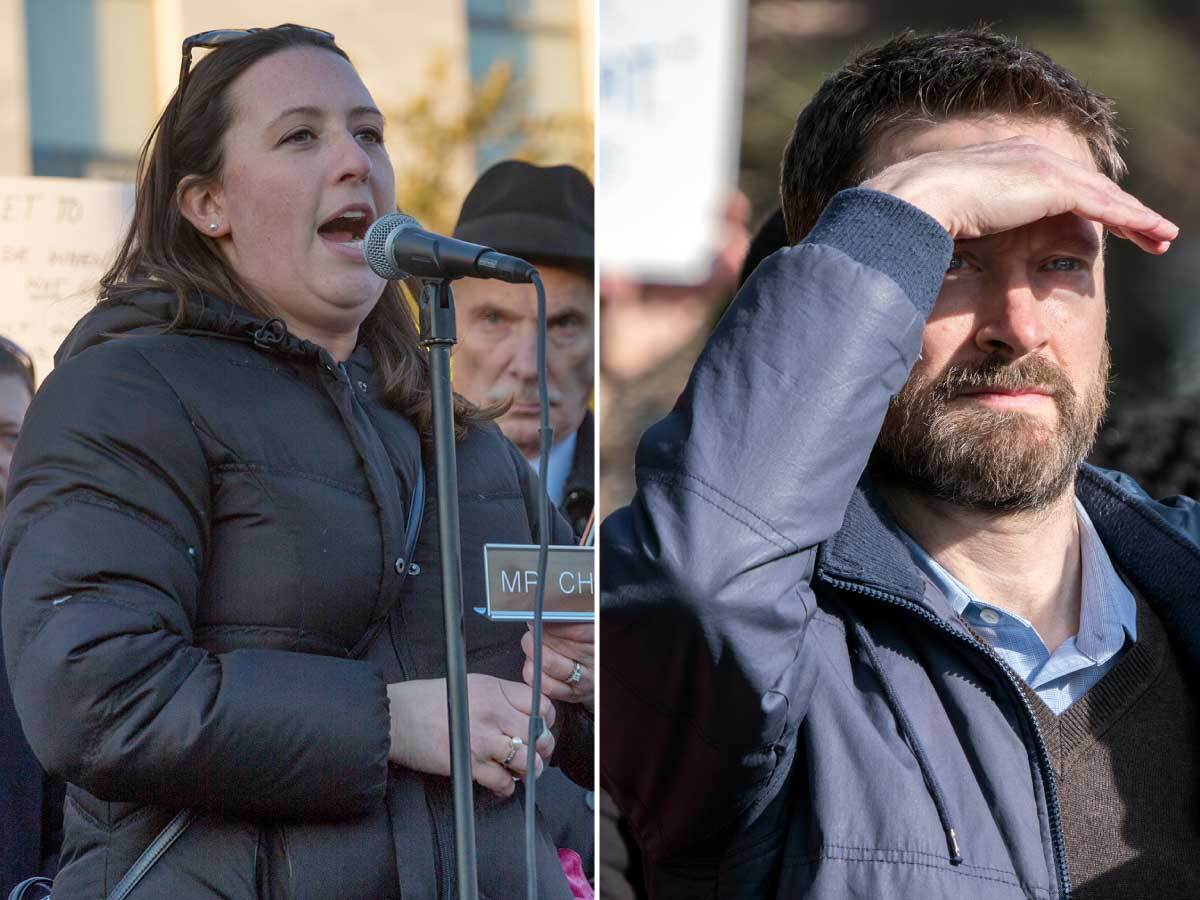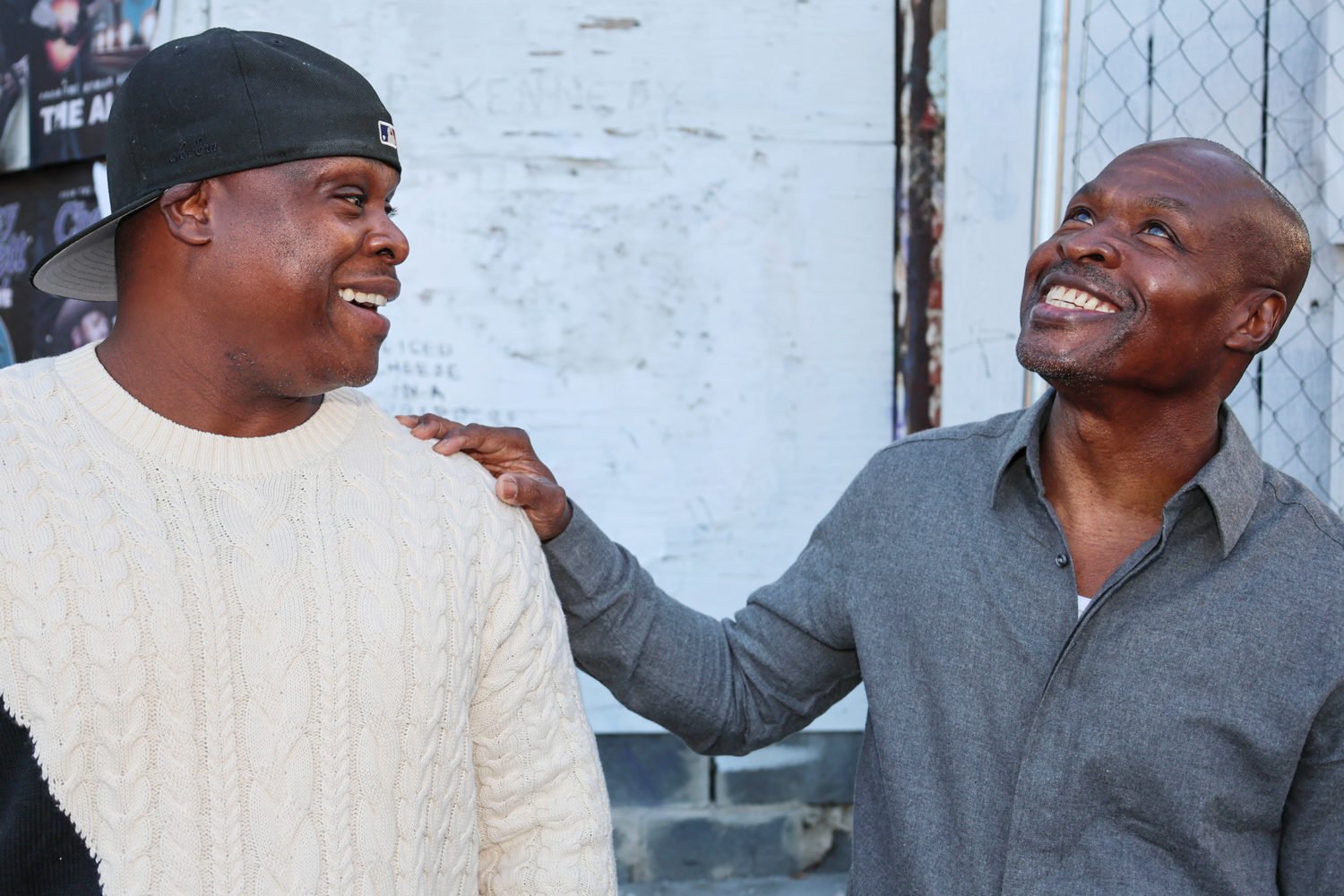Ask Jack Burkman why he’s staging an elaborate “re-enactment” of Seth Rich’s last night on earth, and his answer is prestige television.
“FX did a re-enactment of the [O.J.] Simpson murders a few months ago,” Burkman says outside Local 16 on U Street. “The significance of that is that after it came out, it was one of the most fertile periods of the whole O.J. saga. Stations ran with new theories meant to stimulate great thought of the matter.”
Burkman is talking about The People vs. O.J. Simpson, FX’s ten-episode miniseries that dramatized the former NFL star’s trial for the murders of Nicole Brown Simpson and Ronald Goldman. While the show cleaned up at the Emmy Awards thanks to its detailed production values and ensemble cast, it did little to shake the public’s skepticism of the actual case’s not-guilty verdict.
But to Burkman, that show’s existence is strong enough to validate what he’s doing on a hot Tuesday afternoon. The Washington lawyer and lobbyist has made it his personal mission to figure out who killed Rich, a 27-year-old employee of the Democratic National Committee employee last year. As we talk, Local 16 is acting as a stand-in for Lou’s City Bar in Columbia Heights, where Rich had been into the early hours of July 10 before walking home to Bloomingdale, where he was fatally shot about 4:19 AM. Inside the bar, actors portraying Rich and a bartender are playing out what Burkman and his associates imagine was one of Rich’s final conversations.
“Top me off, will ya, Bill?” fake Seth says.
“Sorry, man. I gotta cut you off,” the bartender responds.
“You can’t do that.”
“I can and I will. Are you okay, Seth?”
“Yeah, yeah. No. No, I’m not. Stuff at work and I just don’t have the money, not the money I need. You know how much it costs to live in Brooklyn.”
“It’s tough, man.”
“But I got a plan.”
“It’s good. Plans are good. Let me get you a ride home, Seth.”
“No, no, no. I gotta meet with somebody.”
“Now? It’s two in the morning. Who are you going to meet with?”
“Can’t say.”
“Seth, let me get you a ride home.”
“Damn. I don’t need a damn ride home.”
The actor playing Rich slams his hand on the bar, gets up, and stumbles back. Kenny Ruff, the director Burkman has hired, yells “Cut!” and the crew resets to shoot the scene from another angle. Again and again for nearly an hour.
This production is the latest step for the Profiling Project, a “war room” Burkman has set up to carry out an extrajudicial investigation of Rich’s death. Burkman, 51, doesn’t have a professional background in law enforcement or forensic science. He’s a Georgetown-trained lawyer and Republican lobbyist who’s made a personal fortune representing corporate clients around DC, and a name for himself as a media gadfly who sometimes sends outlandish press releases, like one in 2014 in which he claimed to be pushing legislation to ban gay men from playing in the NFL after defensive prospect Michael Sam came out before the draft.
Burkman will tell you his interest in the case derives from a connection he feels to a grieving family 1,200 miles away in Omaha and how his mother worried for him when he left Pittsburgh for DC.
“I love the Riches,” says Burkman, who appears to have run to Local 16 in black sneakers, black running shorts, and a bright orange athletic shirt. “I think the family is so courageous. I’m doing it for them. They had Access Hollywood and Extra banging on their door. If I was they and I lost a son I wouldn’t have the courage to do what they did.”
The feeling only runs one way. Save a November press conference that Joel and Mary Rich attended after Burkman announced he was putting up a $100,000 reward for Seth’s killer, the Riches want nothing to do with him. They pleaded for people to let the DC police continue their investigation and get the amateur sleuthing and conjecture out of the way.

Here are the publicly known facts about Seth Rich’s death: After Lou’s City Bar closed up about 1:30 AM, Rich started walking home. The walk from Columbia Heights to Bloomingdale usually takes about 40 minutes, but Rich took longer to get home that night, walking around talking on the phone. He made at least five calls—two messages for his father, one to a friend who called him back for a 12-minute call, and two calls with his girlfriend that lasted a cumulative two hours and 13 minutes. About a minute after the second call with his girlfriend ended, Rich was nearly home, where he was shot. The DC police’s gunfire detectors recorded the shots, prompting officers to respond to the scene, where they found him still alive; he died a few hours later at the hospital.
The block where Rich was shot was poorly lit and does not have much surveillance. And last year, DC Water was in the middle of an extensive project to prevent Bloomingdale’s frequent flooding, which often caused street lights to lose power. Armed robberies in the neighborhood also increased last year over 2015. Rich’s hands and legs showed bruising, and his watchband was damaged, suggesting a physical altercation. Since the outset, police have been investigating Rich’s death as an armed robbery gone awry.
But the combination of Rich’s employer, recent news that DNC email files had been infiltrated by Russian hackers and published by WikiLeaks, and the backdrop of a bitter presidential election was fodder for people who wanted to turn this into something more than a homicide investigation, including some very-high-profile individuals. WikiLeaks founder Julian Assange, former House Speaker Newt Gingrich, and Fox News host Sean Hannity have all suggested that Rich—supposedly angry that Hillary Clinton beat Bernie Sanders for the Democratic Party’s nomination—had been WikiLeaks’s source instead of the Russians. Their statements only breathed life into a conspiracy theory that claims, despite US intelligence agencies’ reports of Kremlin-sanctioned cyberattacks, that Rich was the victim of a revenge killing. Burkman, for his part, is trying to build a different narrative in which the Russians did the hacking, then killed Rich to cover their tracks after he found out.
Neither story has any real evidence to it. Rich worked on DNC voter files and was preparing to be dispatched to Clinton’s headquarters in New York for the fall campaign. His family has pleaded with Hannity, Gingrich, and others to stop their theorizing. Now Burkman, who last month published a 45-page “preliminary report” on his group’s private investigation that was full of more conjecture, is staging a scripted and acted-out version of what he believes happened. For the Rich family, which cut off contact with Burkman several months ago, it’s just more agony.
“I can’t come up with the right words but gross and disgusting,” says Aaron Rich, Seth’s brother. “This re-enactment is a disgusting and gross use of my brother’s death. It’s a stunt for someone to use for their own agenda, with no facts to support it.”
A few hours after the bar scene, the film crew is in Bloomingdale outside a house about half a block from where Rich lived. It’s a quiet evening. A few neighbors are walking their dogs or popping into the corner store. Besides Burkman’s outfit, there are two documentary crews working on projects related to the Rich investigation. Even though there is no credible evidence to support the conspiracy theories, they’ve become so noisy that it’s impossible for anyone to cover the case without acknowledging the people pushing them. As of Tuesday, that group may even include President Trump, who was alleged in a lawsuit to have pushed Fox News to publish a now-discredited story claiming evidence of communication between Rich and WikiLeaks. (The lawsuit was brought by Rod Wheeler, a private investigator cited in the Fox News story who recanted statements attributed to him; the White House says Trump was not aware of the debunked story.)
And yet, here we are, watching what amounts to a live production of fake news. While the actors rehearse, a jittery, wiry man calling himself Brendon and wearing a leather vest, an earpiece, and a stars-and-stripes bandana around his neck walks up to the doc crews and me. “You just saw me,” he says. “I’m working security. I’ve seen you for a while. Let them do their re-enactment. Somebody’s face doesn’t need to go into the dirt.”
Brendon continues rambling about how he was a Marine, how he rescued children, how he was an addict, and puttering around the sidewalk.
The three actors—the one playing Rich from the bar earlier and two bearded, burly guys playing hitmen—finish their rehearsals just after sundown. Burkman arrives, still sweaty and in athletic gear, but having swapped out his orange shirt one in fluorescent green. And then we all watch the fake Seth Rich pretend to die, again and again and again.
“Whoa, whoa,” the Seth actor, stumbling down the block, says as the henchmen approach. “You want my wallet? Phone? My watch? Take it. It’s a really expensive watch.”
One of the baddies says “No.”
The actor playing Rich replies: “I did everything. You’re safe. I took every necessary precaution. There’s nothing they can trace back to you.”
The fake hitmen take out their prop guns. The actor playing Rich runs away. A crew member yells “Bang! Bang!” The scene repeats again and again and again. Dozens of takes.
At some point, Burkman’s team will spool together the best footage and put out a YouTube video that he hopes will be publicized. He’s got it into his head that this “re-enactment” will be watched and shared and will lead to the Rich case being solved.
“The way a re-enactment works,” Burkman tells me, “A and B see the re-enactment and might come forth and say ‘we weren’t eyewitnesses but we heard C and D say something.’ And then C and D might come forth and say ‘we weren’t eyewitnesses but we K and L will say they saw something.’ And by the time you get to S and T you’ve got the eyewitnesses and you solve the murder. That’s the way it works.”
Except it’s not. Police have said for months there were no eyewitnesses to a homicide that took place on a poorly lit block at 4:19 in the morning. Details about the shooting have been slow to emerge, slow enough that Burkman is convinced that the absence of new evidence means the official investigation has stopped. He’s suing the city for copies of the ballistics report from the crime scene and the medical examiner’s report from Rich’s autopsy. In the meantime, he’s connecting dots that aren’t even on the same pieces of paper.
Burkman’s reconstruction of a crime scene doesn’t hold up with professional standards.
“Doing a reconstruction has to be done based on physical evidence,” says Tom Bevel, a 27-year veteran of the Oklahoma City Police Department and the staff historian for the Association for Crime Scene Reconstruction. “Anybody can do an animation, and you can make that do whatever you want. A true reconstruction can identify events and actions, never the motives or reasons.”
Crime-scene recreations involve detailed readings of elements like entry and exit wounds, Bevel says. Burkman’s production does not appear to take those into account.
“You have to have a foundation of fact you can rely on,” Bevel says. “Once you run out of physical evidence and fact, you have make-believe.”
About an hour into the death scene, Holly Wheeler and Jeremy Farrell, who live in the building across the street from where Burkman’s production is shooting, are walking back from the corner store and stop in horror.
“You’re disgusting!” Farrell yells.
The crew resets for another take.
I walk over to talk to Wheeler and Farrell. “I was getting a bottle of wine and saw them and was like, ‘What the fuck?’” Wheeler says. “What people don’t realize is that the last two years, crime was up. The lights were out with the DC Water project. It could have been any one of us.”
“It’s going to be another Comet pizza,” Farrell says, referring to the equally baseless conspiracy theories that have slimed Comet Ping Pong since another batch of hacked emails were published last year.
To the Rich family, it already is. A fake news story is being given scripted form, and Burkman is its producer.
“It’s one of the most revolting, repulsive and twisted things I’ve seen,” Aaron Rich says after seeing a clip of the bar scene. “It’s obvious from the ‘creative liberty’ taken in the absence of facts, this was done purely to push a conspiracy theory and not search for true answers.”




















